Media Contacts
-
Evelyn Wight
Email: ewight@tnc.org
On February 25, 2024, Hoʻāla Kealakekua Nui, The Nature Conservancy, Hawai‘i and Palmyra (TNC), and the Hawai‘i Department of Land and Natural Resources (DLNR) Division of Aquatic Resources (DAR) held an opening ceremony for Kanu Ko‘a (“Planting Corals”) at Kealakekua Bay, a Marine Life Conservation District. This is the second community-led coral reef restoration project on the Island of Hawaiʻi.
Kanu Ko‘a is a project that integrates Hawaiian culture, local community, and the science of coral restoration to accelerate coral reef growth and recovery. The ceremony was rooted in Hawaiian cultural practice and protocol, emphasizing ‘ohana (family) relationships with ko‘a (corals).
“Hānau ka ‘ukuko‘ako‘a, the worm or coral polyp, emerged from the lipolipo, the constant darkness where all forms begin,” says Shane Akoni Palacat-Nelsen, President of Hoʻāla Kealakekua Nui. “In the cosmogonic genealogy chant Kumulipo, the coral is mentioned as one of the first physical life forms that emerge, alluding that the coral is a foundational entity for all life forms. The ‘ukuko‘ako‘a is the regulator for ecosystems; without it, ecosystems are imbalanced. That’s why when our village received the distressing news that our coral is severely depleted in our Bay, we took it very seriously and applied the kumu kānāwai Kīhoʻihoʻi—the edict of regeneration—with modern scientific methodologies.”
At the event, project partners planted ko‘a in Kealakekua Bay, within the ahupuaʻa of Kealakekua and Kaʻawaloa. Lineal descendants of Kealakekua along with TNC and DLNR divers collected pieces of ko‘a within the Bay that had broken off during recent high swells and would have otherwise died. Ko‘a pieces were brought to shore on waʻa Kinikini, a double-hulled canoe. Using specialized saws, the team and community members cut the collected pieces into one-inch fragments. Divers transported the pieces back into the Bay and affixed them to the reef with epoxy, while community members watched from the surface. Ko‘a pieces were planted in clusters, enabling them to grow together into a colony more quickly. All work with ko‘a is being conducted under a Special Activities Permit with DAR and is supported by the descendants and residents.
Launch of Kanu Ko‘a in Kealakekua Bay



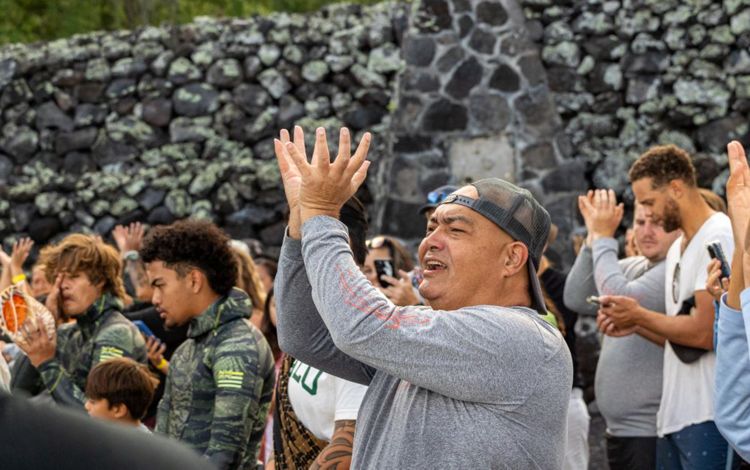
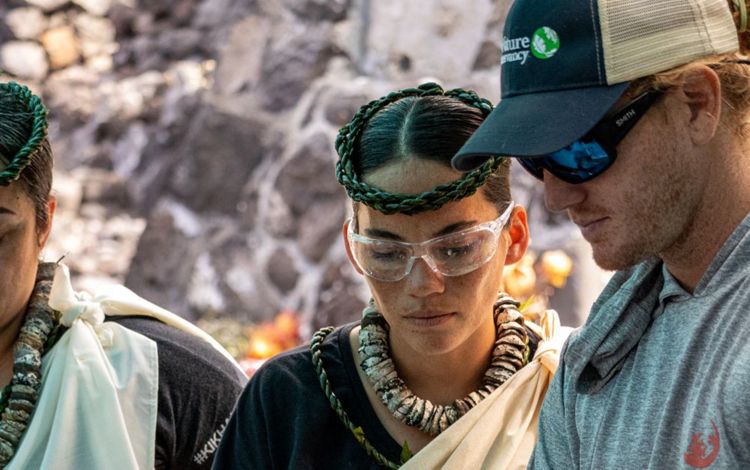
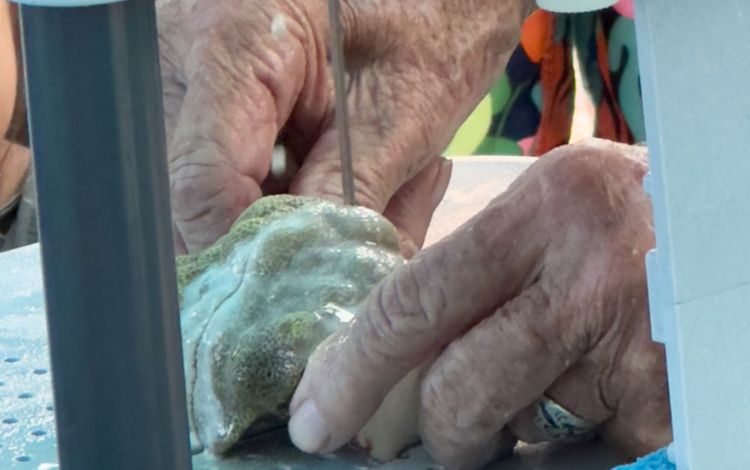
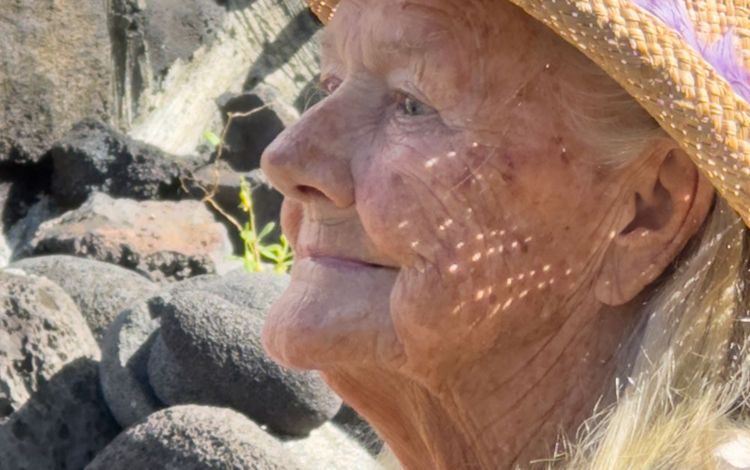

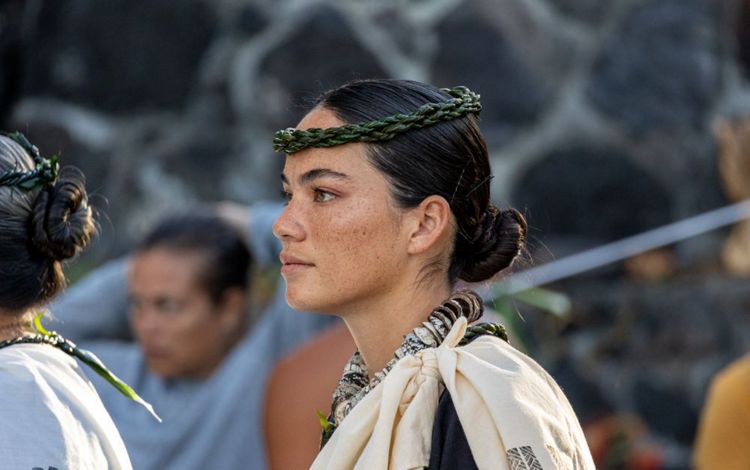
“Strong collaborations like the one we are building here represent our best chance to mitigate the vast and varied issues facing coral reefs in Hawai‘i,” says Chris Teague, a Hawai‘i Island-based aquatic biologist with the DLNR DAR. “By focusing on the restoration of corals as the foundation of these important habitats, this hui hopes to not only help rebuild Kealakekua’s coral reefs, but to catalyze additional restorative work both here and across Hawai‘i.”
Scientists estimate that live coral cover on some Hawai‘i reefs has declined by 60% over the past 40 years, due in part to land-based pollution, overuse and overfishing. The climate crisis exacerbates this decline, with marine heatwaves causing three coral bleaching events in the last decade. As a result of a 2015 marine heatwave, Hawai'i lost 30% of its live coral cover statewide. Restoration can help reefs recover and build their resilience to future stressors.
“Working with and learning from the Kealakekua community has been a privilege,” says Julia Rose, TNC’s Coral Restoration Program Manager. “The work they are doing to restore and maintain the health of cultural and natural resources, including coral restoration, will help to perpetuate heritage, community, and environment in Kealakekua through the mounting pressures of climate change.”
The local community non-profit, Hoʻāla Kealakekua Nui, has been instrumental in the planning, design, and implementation of the coral restoration project and building local community capacity in Kealakekua Bay. The community has developed a collaborative partnership, called KapuKapu ʻOhana, to work with government agencies, NGOs, researchers, and the community to implement strategies to care for the Bay’s rich cultural and natural resources.
Together with the first Kanu Ko‘a project launched at Kahuwai Bay in Kaʻūpūlehu last October, this effort will help to determine the best method for restoring the ko‘a species surrounding Hawaiʻi Island. Next steps include reattaching whole pieces of broken corals as well as growing corals from fragments on an in-water nursery table to then be outplanted.
During the next year, the team will monitor the growth rates and health of the reattached ko‘a to evaluate which method of planting—whole pieces, fragments or nursery-grown fragments—helps ko‘a grow best.
Palacat-Nelsen shared that this work showcases a collaboration between government, private and community interests all working together and is supported by the White House’s Strategy to Advance Equity, Justice, and Opportunity for Asian American, Native Hawaiian, and Pacific Islander (AA and NHPI) Communities.
“The application of traditional knowledge has recently found its way back into conservation efforts and stewardship of cultural and natural resources, and these federal commitments to Native Hawaiians and other recognized Natives support this work,” he said. “The strategy elevates Indigenous Traditional Ecological Knowledge (ITEK) as a ‘body of observations, oral and written knowledge, practices, and beliefs that promote environmental sustainability and the responsible stewardship of natural resources through relationships between humans and environment systems.’ The Nāpoʻopoʻo Village at Kealakekua Bay, the Kaʻupūlehu families at Kahuwai Bay in North Kona, and other supporting ‘ohana, our awesome partners, and communities are committed to re-establishing and maintaining our relationship to the coral communities.”
“It’s been amazing to see so many people come together to help realize a vision for this bay that lineal descendants, stewards, and stakeholders have been working towards for decades,” says Teague.
###
Hoʻāla Kealakekua Nui seeks to rise up to the challenge of protecting and preserving Kealakekua Bay for our generation and those to come. We engage in collaborative stewardship to Kealakekua Bay’s natural and cultural landscape for the benefit of the whole community. http://kealakekua.org
The Nature Conservancy is a global non-profit organization dedicated to conserving the lands and waters on which all life depends. Informed by science and guided by traditional values and practices, we apply innovative, nature-based solutions to our world’s toughest challenges so that nature and people can thrive. TNC has forged partnerships to manage 14 preserves and support other sites in Hawai‘i and Palmyra Atoll, working with government, private parties and communities to protect Hawai‘i’s and Palmyra’s forests and coral reefs for their ecological value and for the many benefits they provide to people. Visit nature.org/HawaiiPalmyra.
The Nature Conservancy is a global conservation organization dedicated to conserving the lands and waters on which all life depends. Guided by science, we create innovative, on-the-ground solutions to our world’s toughest challenges so that nature and people can thrive together. We are tackling climate change, conserving lands, waters and oceans at an unprecedented scale, providing food and water sustainably and helping make cities more resilient. The Nature Conservancy is working to make a lasting difference around the world in 81 countries and territories (40 by direct conservation impact and 41 through partners) through a collaborative approach that engages local communities, governments, the private sector, and other partners. To learn more, visit nature.org or follow @nature_press on X.
